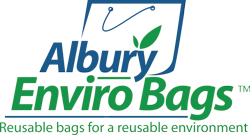When it comes to using bags, there is often some confusion about what is best for the environment and the types of bags that are most fit for the purposes for which they are required. Green bags are often praised for having a reduced negative impact on the environment, paper bags are touted as a less favourable option and the harmful effects of plastic bags are frequently illuminated.
So, what are some of the best tips for putting the environment first when using bags?
#1: Know where your bag will end up…
There is no denying that plastic bags can be incredibly convenient and effective in fulfilling a number of purposes; they do not take up much space and can be used repeatedly. However, plastic bags are not always used more than once by the vast majority of people. Instead, many people dispose of plastic bags following just one use.
Even if you do use your plastic bags a number of times, they will eventually be disposed of and will end up in landfill. When a single plastic bag reaches landfill, it remains there for an estimated one thousand years before it begins to decompose.
Green bags offer a solution to this alarming reality. Green bags are reused far more often and are seen by many as less dispensable and warranting less careless disposal.
#2: Consider how your bag is made and the products used in its manufacture…
Most plastic bags are not biodegradable and are made from polyurethane, which includes components of natural gas and crude oil. These resources have a negative impact on the environment in the way that they are mined and their depletion of natural resources that could otherwise be used more productively and effectively.
And, when you consider paper bags and the processes and materials required for their manufacture, paper bags can rarely be deemed environmentally friendly.
#3: The harm that is caused…
Plastic bags that are disposed of all too often find their way into waterways and other locations where they are easily ingested by animals who mistake them for food. Sadly, it is not just the consumption of plastic bags that hurt animals. Plastic bags also cause harm to animals through strangulation, choking and entanglement.
Not only is this upsetting, it is also something that can and does occur close to home. Plastic bags that are carelessly disposed of cause harm and are a very real danger to household pets.
For those with children, plastic bags need to be treated with exceptional care. Dangerous to children because of the suffocation hazard they present, plastic bags need to be stored well out of children’s reach.
#4: The effectiveness of recycling…
While it is possible for plastic bags to be recycled and it is true that many retailers have implemented strategies to encourage recycling, it is a grim reality that an estimated one per cent of plastic bags are recycled worldwide.
Although many people have great intentions and are well-meaning, the take up of opportunities to recycle plastic bags is limited and this means that plastic bags are more likely to end up in landfill or as litter.
Green bags, often provided as promotional bags for various companies, lend themselves better to repeated use than plastic bags. Many people find that it is effective to leave a number of green bags in the car or at the office so that they can be quickly accessed when shopping needs to be done.
Fortunately, many people are environmentally aware when it comes to the use of bags. However, convenience often dictates that people opt for plastic bags when they are doing their shopping. When people are committed to the use of green, reusable bags, a range of positive environmental benefits are facilitated.




